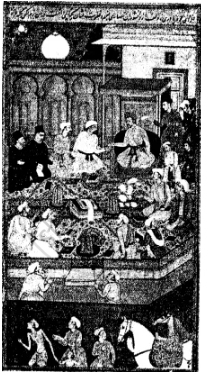Advertisements
Advertisements
Question
What was the extent of Akbar’s kingdom? How was administration carried out during Akbar’s time? Explain with reference to the Central and Provincial administration.
Solution
Akbar’s empire extended from Bengal in the east to Afganistan in the west and from the Himalayas in the north to the Godavari river in the south. His vast empire was divided into fifteen provinces. They were Kabul, Lahore, Multan, Delhi, Agra, Allahabad, Oudh, Gujarat, Ajmer, Malwa, Bihar, Bengal, Khandesh, Berar, Ahmednagar. The Akbar administration was divided into Central and Provincial administration.
Central Administration
The emperor was assisted by a team of ministers and officials for the proper administration of the empire. Their names and functions are as follows:
- Wazir Dewan: He was the head of the revenue department.
- Mir Bakshi: He was the head of the military department and the paymaster of all mansabdars.
- The Qazi: He was the chief judge.
- Chief Sadr: He was the supervisor of the royal household.
- Vakil: He was the head of the advisory board.
Provinical Administration
Akbar’s empire was divided into fifteen provinces or Subas, which-were further subdivided into Sarkars, and these in turn into Parganas. Each Pargana comprised a number of villages. Each province was under the charge of a subedar, who had full civil and military powers. The Subehdar was assisted by a number of officials like provincial Diwan, Bakshi, Qazi, kotwal and a number of other officials
APPEARS IN
RELATED QUESTIONS
Important Words:
vakil
Important Words:
Subas
Important Words:
Din-i-Ilahi
What were the main sources of revenue for the Mughal government? How did Akbar improve the collection of revenue?
Give reasons why.
Akbar is referred to as ‘Akbar the Great’.
State whether the following is true or false:
Akbar assumed absolute power and authority at the age of 21.
Answer the following question in one or two words/ sentences:
Why did Akbar embark on a policy of conquest and annexation?
Answer the following question briefly:
Discuss the power and position of the emperor in the central administration.
The picture depicts a Mughal emperor holding discussions on religious matters in the Ibadat Khana.

Identify the emperor.
The picture depicts a Mughal emperor holding discussions on religious matters in the Ibadat Khana.

Why did the emperor organize these assemblies?
